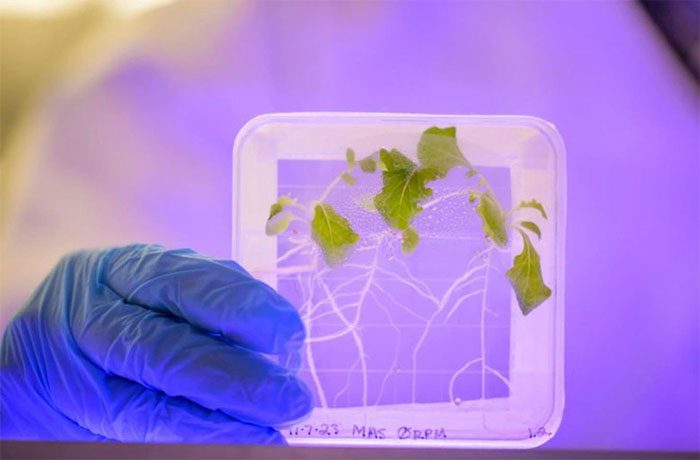Research Finds Lettuce and Other Plants More Susceptible to Bacteria in Space than on Earth.
It has been over three years since the National Aeronautics and Space Administration (NASA) introduced lettuce grown in space, which has become a staple in the menu for astronauts aboard the International Space Station (ISS).
According to Scitech Daily, there is a significant concern: The ISS harbors a wide array of pathogenic bacteria and fungi. Many of the pathogens present at the ISS are highly aggressive and can easily invade the tissues of lettuce and other plants.

Researchers at the University of Delaware are examining how plants grown in space are more susceptible to Salmonella bacteria compared to those grown on Earth – (Image: UNIVERSITY OF DELAWARE).
Once astronauts consume lettuce contaminated with E. coli or Salmonella bacteria, they risk falling ill.
With billions of dollars invested by NASA and private companies like SpaceX into space exploration each year, some researchers are concerned that a foodborne illness outbreak on the ISS could jeopardize missions.
In a recent study published in the journal Scientific Reports and the open-access journal npj MicroGravity, researchers from the University of Delaware (UD), USA, tested growing lettuce under simulated microgravity conditions similar to those on the ISS.
Plants are adept at sensing gravity and use their roots to detect it. The crops at UD were exposed to a simulated microgravity environment through rotation. Researchers found that these plants were indeed more susceptible to infections from human pathogens, Salmonella bacteria.
Noah Totsline from the UD Department of Plant and Soil Sciences noted that stomata—small openings on leaves and stems used for respiration—typically close to protect the plant when it senses stressors. However, when the research team introduced bacteria to the lettuce under simulated microgravity, they observed that the leafy greens actually opened their stomata instead of closing them.
Totsline remarked that this was quite surprising.
Bacteria are ubiquitous. They are on us, on animals, on the food we consume, and in our environment.
Thus, naturally, UD food safety microbiologist Professor Kali Kniel suggests that wherever humans are, there is a likelihood that bacterial pathogens coexist.
Minimizing Risks for Individuals on the ISS According to NASA, about seven people live and work on the International Space Station, which is roughly the size of a six-bedroom house. While it is not the most confined environment, it is still a place where germs can wreak havoc. “We need to prepare and mitigate risks in space for those currently living on the International Space Station and for those who may inhabit it in the future. It is crucial to better understand how bacterial pathogens respond to microgravity environments to develop appropriate mitigation strategies,” Professor Kniel stated. |


















































